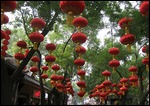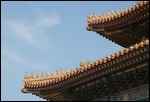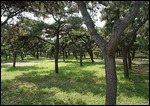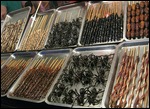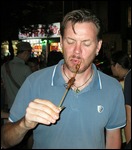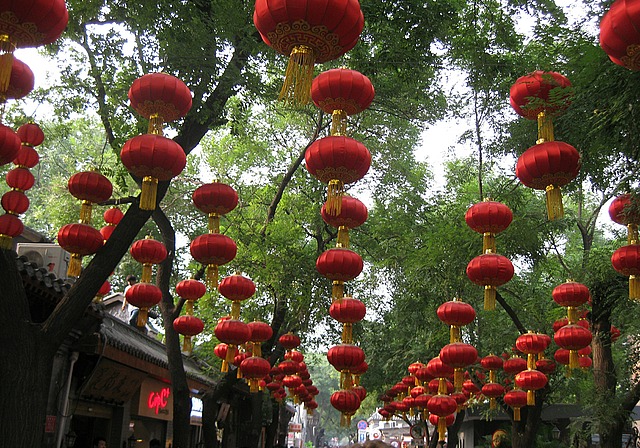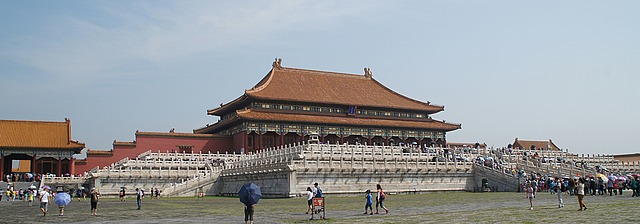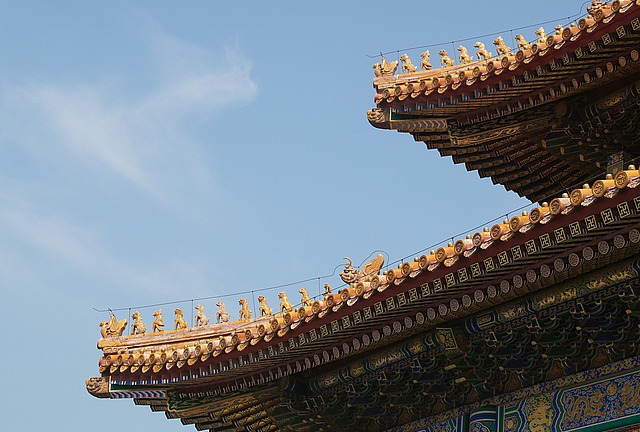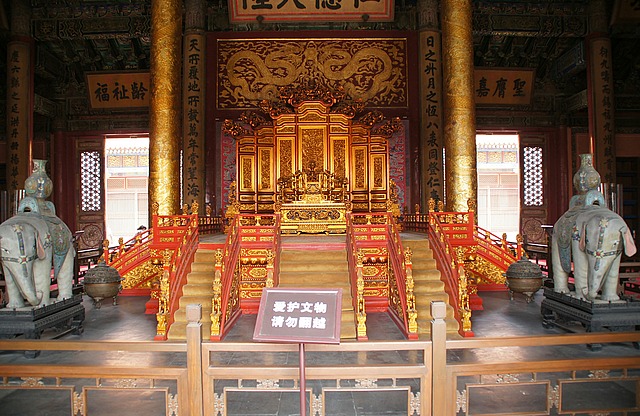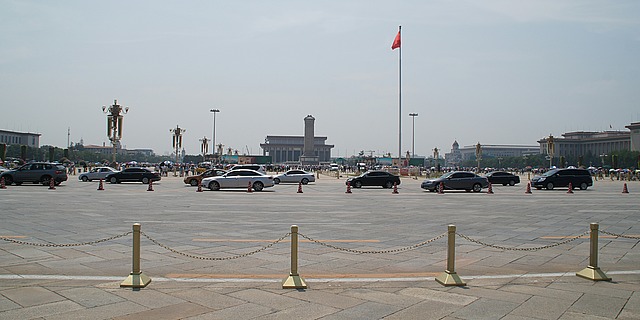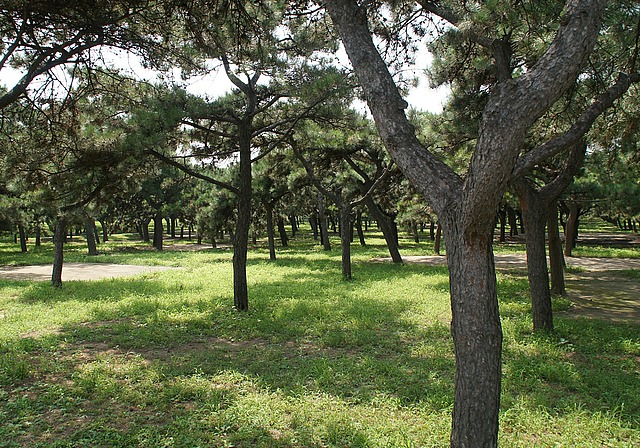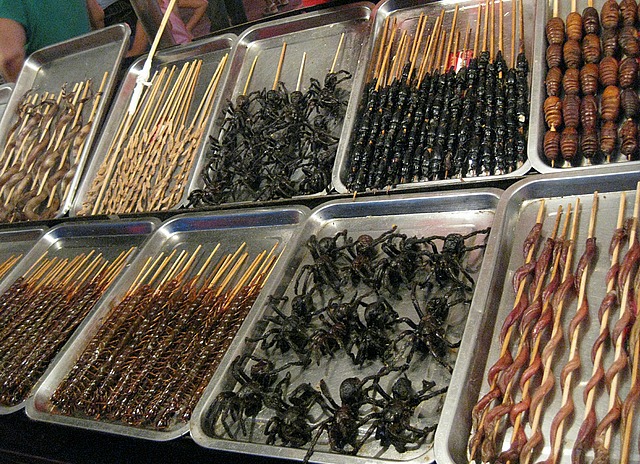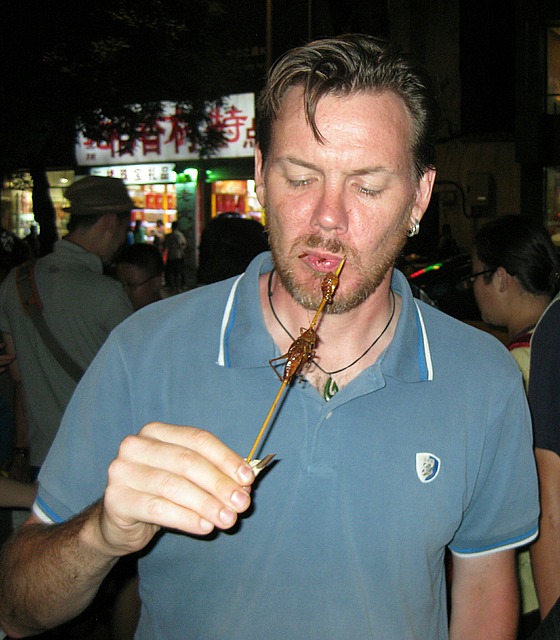The train sauntered on, ever southwards. Knowing the signs, it was easy enough to spot how the landscape changed to ever more deserty conditions. The five of us were split in a 4+1 combination, leaving our silver aussie the odd one out. Therefore, to keep the gang reasonably intact, I split my waking hours between the two neighbouring compartments, thus getting to know a Singaporian documentary filmmaker in the process.
The border crossing took some four hours, and it was quite the experience; 30 minutes before each station they lock the bathrooms, and I recieved an urgent call from nature about 28 minutes before we reached the border, leaving me in the not so favourable position of begging the train attendant for access to the staff loo. Eventually, she obliged, and that was quite the relief.
The main reason the border crossing took that much time was the slight difference in width between the Mongolian tracks and the Chinese. A few carriages at a time had to be lifted some 1,5 metres up, and the entire wheelbase changed to fit the Chinese standards. Eventually, though, all 18 wagons had brand new wheels, and on we rolled, into China.
At 14:00 we rolled into Beijing central station, to be greeted by our local Chinese guide, who had taken the western name Claire. Backpacks sticking out everywhere, we annoyed the locals by taking a more than crowded metro through the bustling city. With just about a day and a half to explore the Chinese capitol, we wasted no time, and with haste set out for sightseeing.
Hutongs are the traditional way of cityplanning, with small square yards, lined with narrow alleyways. Thirty minutes east of our hotels lies the largest and most lively hutong district, and that's where we perused the cornershops, the souvenir stalls and the busy streets the afternoon before the pre-departure meeting.
A decidedly younger group, the Beijing-Xi'an gang turned out to be more international as well. In addition to the native English speakers we had representatives of the Netherlands and Switzerland, and of course me, Martin, from Sweden. Peking duck was on the menu for the evening, and cheap Chinese beer.
One can't really claim to have visited Beijing without a tour of the Forbidden city and Tiananmen Square, so that's where we headed next morning. The splendour of the palace is impressive, with titillating and poetic names such as Hall of Supreme Harmony, Palace of Heavenly Purity and Hall of Mental Cultivation. The GPS-oriented automatic audioguide helps explain the history and symbolism of the place, and is well worth the extra money. A word to the wise, though: Try going when it's reasonably cool and little to no risk of rain if you want to see anything and keep your eyes from being poked out. If I disliked umbrellas before, I now hate them with every atom of my body. Asians seem to think that they have the right to obstruct other's views and gouge out everyone's eyes as soon as the mercury hits twenty just because they apperently don't know what sunscreen and hats are. A pox on Umberto Umbrella and his house! A pox, I tells ya!
Right south of the moated city lies Tiananmen Square, or the Square of Heavenly Peace*, supposedly the largest town square in the world. Despite being, at the time, visited by thousands of people, it was nowhere near crowded due to its vast size.
The metro system is, as the case often be, very efficient. However, the process of ticket buying could easily be improved. The price is but 2 yuan, but you can't pay with notes, only with the much rarer coins, and you can only buy one ticket at a time, and it's only valid starting at the station of purchase. Nevertheless, once your ticket is in your hand, the rest is easy as. All signs are translated to English, the line maps onboard tells your position, direction and all the stations in real time, and they have advert tv in the tunnels, timing the speed of the train.
Tranquility can be found even in the bustling city of Beijing. At the cypress gardens surrounding the Temple of Heaven, one can find peace and quiet and a lack of other people, bar the occasional Tai Chi-perfoming oldster. The actual temples are however filled with tourists.
Houhai and Qianhai are the districts on either side of the lakes, and are both filled with restaurants, bars and cafés with nice lakeside views. I managed to squeeze in a stroll in the area before heading out for dinner at the night market. Most of the food offered were in fact dead before cooking, but the scorpions were put in the deep fryer still moving and wrigglying about. Starfish, spiders, grasshoppers, centipedes, seahorse, lizards, snakes and silkworms could be bought on a stick, for quite the expense; a tarantula would set you back 80 yuan. I settled for a scorpion and a grasshopper for starters, and mystery meat (presumably pork) on a stick for main course.
Before leaving Beijing I took the chance of getting up at ridiculuos o'clock to stand in line for about an hour with tens of thousands ahead of us and many more behind, to see the tomb of Mao. Though not a sight in and of itself, the experience and watching the amount of respect the Chinese pay to their deceased chairman is worth the early morning. And true to this trips's tradition of visiting resting places of forgone communist leaders, of course I had to check out Mao's mausoleum. Or, you know, Maosoleum.
*) Där det mejades....
